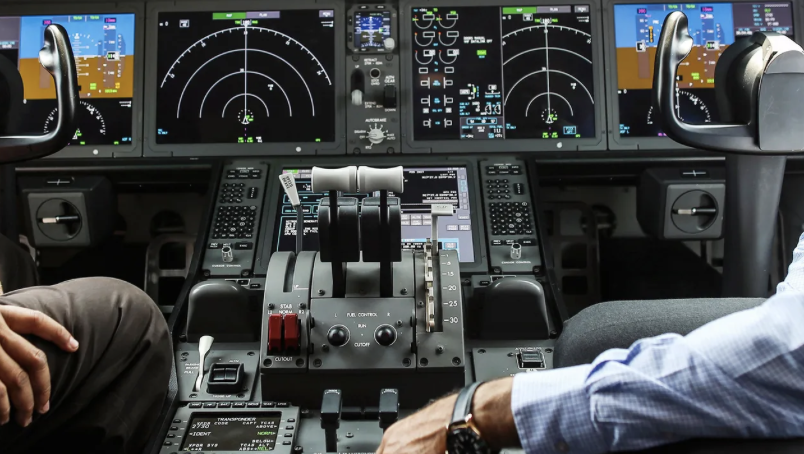
Think about the first time you ever drove to work. It was probably in a new area you were unfamiliar with. As a result, you decided to use a GPS to navigate the first few weeks. You needed time to get comfortable with the streets, where to turn, and how long it took to get there.
After a few months on the job, your drive to work became second nature. A GPS was no longer necessary to navigate back and forth. You knew all the streets, turns, routes, and about how far each took – in case you were running late. Something unfamiliar became familiar with enough time and practice.
Now let’s pretend you decide to take your family out to eat one evening. When you go to work, you normally take the interstate north into the city. For dinner, however, you needed to take it south towards the beach. As you hop in the car and start driving, you come to the intersection where you need to merge on to the interstate. Without thinking, you take your normal route to work and head northbound. Only after you merge do you realize your mistake.
While you knew the route you needed to take for dinner, your unconscious habit of driving northbound to work took over. Your brain was so used to one route that it failed to recalibrate for a different route. It’s not that it was incapable of rerouting. It was just stuck on autopilot: Our brain’s natural tendency to reserve higher level thinking.
When our brain is on autopilot, we’re not actively processing information, consciously grappling with problems, or making difficult decisions. It’s very much the opposite: We’re not thinking about doing anything at all. It doesn’t mean we’re not accomplishing anything. We’re just not thinking about how to do it. This is how something becomes “second nature.” We do it to the point where we don’t have to think about it anymore. This is exactly what happened after your first couple of weeks driving to work. Once you became comfortable with the streets and turns, you no longer needed to think about where you were going. You could navigate yourself unconsciously.
The best way to think about this is to go to nature. Just imagine a hungry cheetah and how it would approach a pack of gazelles. Is it going to work really hard and pick off the fastest one, or is it simply going to pick off the slow one in the back? Dumb question, right? Of course it’s going to kill the slowest one. You’re getting a similar return in exchange for much less work. Why do more when you can do more using less?
Our brains, by nature, are going to operate in a similar way. We’re not designed to constantly process information all the time. We’re designed to process less. Our default mechanism isn’t to do more work. It’s to do less. Just like cheetahs, we’re inherently lazy.
Below is a list of common tasks most people can do without thought:
- Tying your shoes
- Driving a car
- Signing your name
- Walking
- Typing
When you first tried to do any of these tasks, you couldn’t just do them without thinking about them. There was a learning curve. Once you got the basics down, you started to be able to do them with much less conscious thought. Now you can do them with virtually zero thought.
This is our brain’s auto-pilot mechanism at work. With some time and practice, we no longer need to conscious focus on how to draw each letter in our name or where the “a” key is on our keyboard. We can just do things and spend less time thinking about how to do them. This part is critical for skill development.
High level cognitive processing creates a huge drain on our brain and body. It isn’t sustainable for long periods of time. As a result, our brain needs strategies where it can reserve mental energy and save it for when we really need it. This is where our brain’s natural tendency to conserve calories comes into play. The more tasks we can reserve for autopilot, the more mental energy we have at our disposal.
We can’t afford to dedicate a large amount of cognitive processing to routine tasks like tying our shoes or driving to work. We need that energy for breaking down complex problems, coming up with creative solutions, or engaging in other examples of deep, focused work. Our brain’s autopilot feature isn’t just convenient. It’s necessary for survival. It just becomes a problem when the solutions on autopilot are counterproductive.
It’s the perfect metaphor for redesigning movement patterns.
If you have an athlete who needs help solving a movement problem, you need to address the brain first. The solutions they have hardwired on autopilot are not optimal. They’re doing things poorly without realizing why or how they’re doing them poorly. This stage is better known as unconscious incompetence, or in simpler terms: I don’t know I suck. This is also where the skill development process begins.
If we want to break this pattern of doing things poorly, we need to work against the grain and fight against our brain’s natural tendency to conserve mental energy. We need to wake the patterns up and get them out of autopilot. If they remain dormant, you’re going to wind up like our example from above and find yourself heading northbound when you need to be going south. We’ll always default to the things we know how to do best. The things we know best are often the things we don’t need to think about. If your solutions on autopilot are not beneficial, you need to wake them up and bring awareness to them so you can start redesigning new ones.
The next step in this process is called conscious incompetence, or in simpler terms: I know I suck. This is where the process of remapping begins. At this point, we’ve brought awareness to the bad patterns and we know what they look and feel like – but they’re still bad. They need work. To fix them, we need to carefully craft specific and deliberate progressions targeted to solve specific movement deficiencies. These progressions should be sequenced. Start with something that’s simple, easy to grasp, and can create a specific sensation for a positive movement adaptation. When the athlete starts to achieve mastery, progress it and slowly make it more challenging, dynamic, and closer to what they do in their normal delivery/swing.
(If you’re looking for an example of a sample progression, read our previous blog: Biotensegrity Part II: Putting Principles into Action.)
You need to be meticulous with the progressions early on in this process. New patterns are most vulnerable when they don’t have a ton of reps behind them. If you don’t catch when the patterns fall apart, you’re just going to continue to feed the old ones. Take the time and get it right from the start. It will save you a lot of work on the back end.
When you start to get reps behind the new patterns, you eventually transition into conscious competence: I can do it when I think about it. Think of this as the stage where you can get to work with your GPS. You have to think about what streets to take and when to turn still, but you’re able to get to and from work successfully without making any wrong turns. You’re starting to see success. This part is key.
When you’re in the process of breaking old habits, you’re going to eat a lot of shit early on. You’re fighting against how your brain and body are hardwired to work. It’s not an easy thing to do, but it is necessary if you want to build a better pattern. We want athletes to have success, but we don’t want to compromise the objective of the pattern redesign. It doesn’t mean everything you do should make the athlete feel incompetent, but there are going to be some things that challenge them early on. Starting to acquire some mastery is a big turning point in this process.
With more and more practice, the patterns can get to the point where they are game ready and in a state of unconscious competence: I can do it without thinking about it. This is the ultimate goal for a skill. In our example from above, we need to be able to drive to and from work without a GPS, have multiple detour routes, know exactly how far each takes, and we shouldn’t have to think while doing any of it. We’re minimizing the cognitive load on our brain and saving it for more important activities.
This works the same way in baseball. We can’t afford to think in games about where our hands are, if our front leg is firming up, or if we’re into our glutes vs. quads. We need to save that mental energy for competing. The more we put on our brain’s plate, the less freedom we’re going to have when it’s time to play. This is why deliberate training is so important. Being able to put our best moves on autopilot is the ultimate performance short cut. However, there are no shortcuts to get to this point.
You’ve got to study for the test if you expect to ace it.
